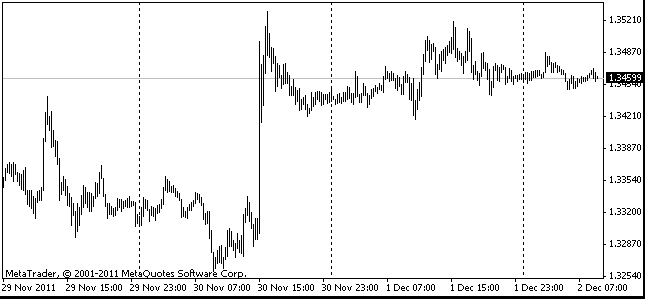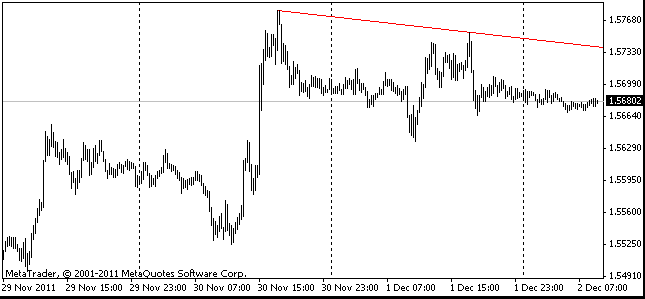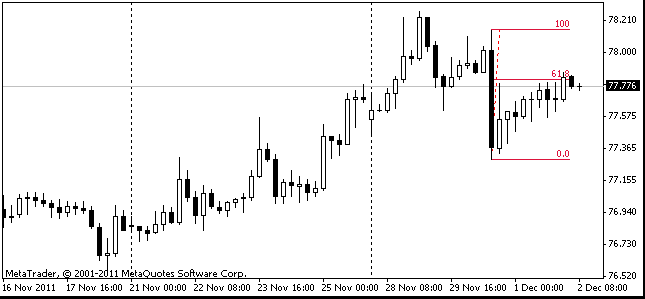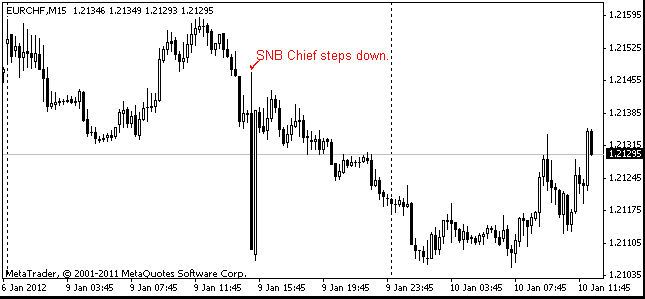EUR/usd
Triggering of stop-orders in eurusd drove the pair to 1.3519 yesterday, but at these levels sellers entered the game. As a result, the daily close was slightly negative, 1.3450, but now we can observe some growth in the dollar, which pushed the rates even lower, to 1.34. In the charts we see that yesterday's reversal is absolutely identical to the situation on February 7. The same downward wave took the pair from 1.357 down to 1.335. If this time the decline is of the same scale, we may see EURUSD somewhere between 1.3250 and 1.3270. Yesterday's upsurge of the single currency frayed the bears' nerves but didn't break the uptrend, which has been in place since the beginning of the month. Not all the markets joined in with selling of risky assets and purchases of the dollar. For example, the US stock indices got stuck at one place: S&P 500 has been hovering around 1515 since the beginning of the week. WTI Crude oil is again at $97 as a week and two ago. The general indicator of the US retail sales, which were published yesterday, met expectations upon the whole – the increase made 0.1% m/m. But with automobile and fuel sales excluded the growth totals just 0.2% which is half as high as expected. Yet it's no comparison with the decline of 0.8% reported in Europe for December. Compare growth by 4.0% y/y in the USA and the decline by 3.8% y/y in the euro zone and you will immediately see where the situation is worse. Is there anyone who thinks that Europe has settled all its issues? In our opinion, the rate of 1.20 will be more reasonable judging by the fundamentals. Yet, we shouldn't wait exactly for this mark, since the Fed's printing press is running at full blast and will hardly let the dollar rise up high.

GBP/USD
The sterling seems to be a real hot potato, no one wants to keep it. Yesterday selling was triggered by Mervyne King's comments on the inflation report. The first news was that the committee once again had revised the inflation outlook. This means that Britain won't get rid of the current price growth rate of 2.7% as quickly as desired. But further followed a hint at readiness to continue stimulation if necessary. Neither the former nor the latter is new to us. We've heard it dozens of times, but still GBPUSD slumped by a figure down to 1.5560.Now the pound is even lower, at 1.55. Probably, purchases of the sterling may be considered only somewhere between 1.5300-1.5350.

USD/JPY
The Japanese yen has gone sideways, which has been somewhat unusual in the recent months. The players are standing still in anticipation of the g20's comments on the Japanese monetary policy. The bloc will hardly name the threat, but, most likely, it will wag its finger at it. It's of interest that the most obvious flat is seen now in EURJPY, usdjpy has been trading near 93.50 just for a couple of days and against the euro the level of 125 has been crossed from above and below for the ninth time in the recent two weeks.

EUR/CHF
For those, who are trying to understand what factors can help to support the euro, we have a nonstandard answer: EURCHF. It is getting support on the decline below 1.2250, but there is a number of minor supports. For example, around 1.23. Since the current rates are a bit higher, it's quite possible that the euro will remain weak, until the SNB will get down to purchasing euros for francs.
